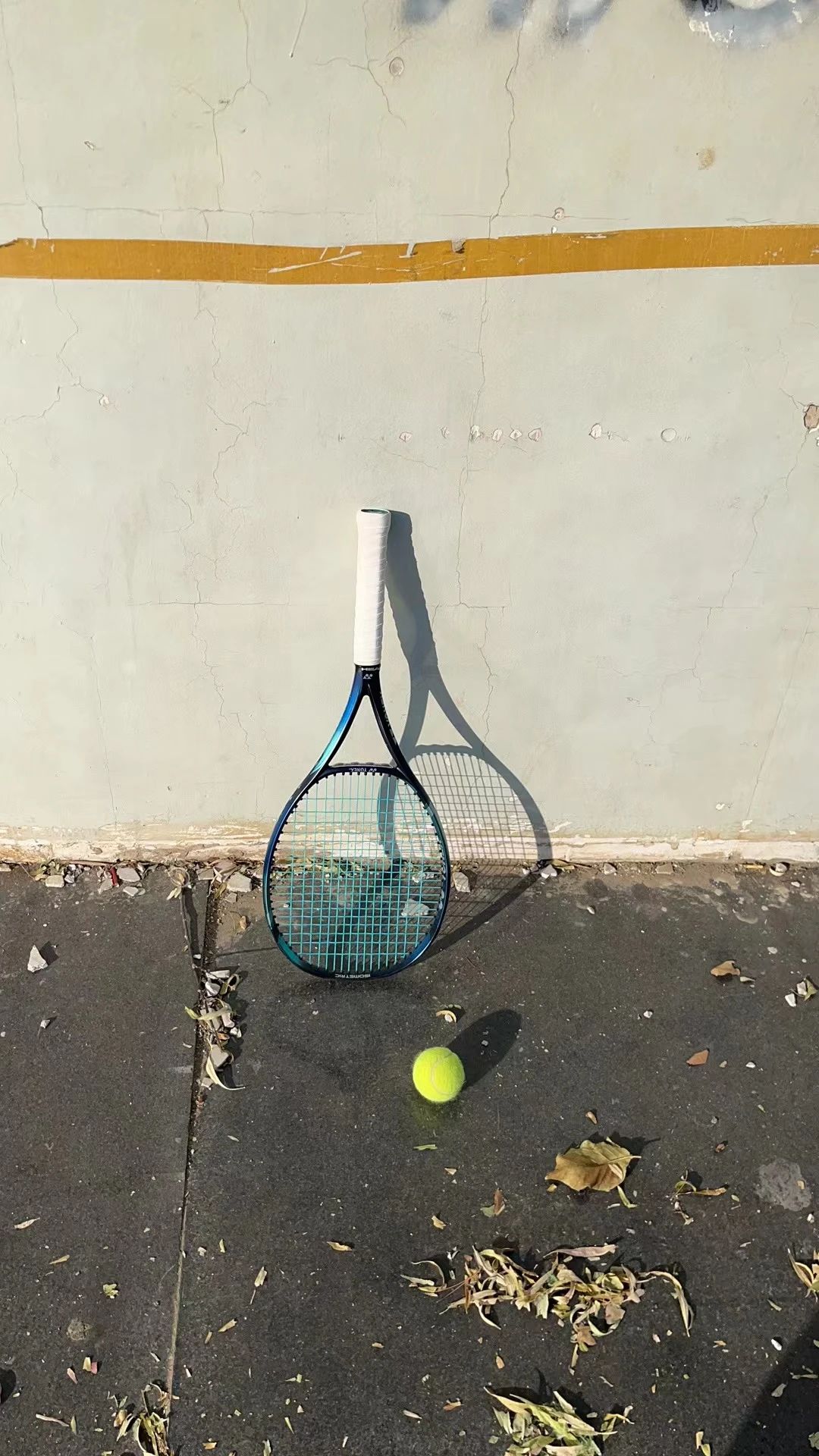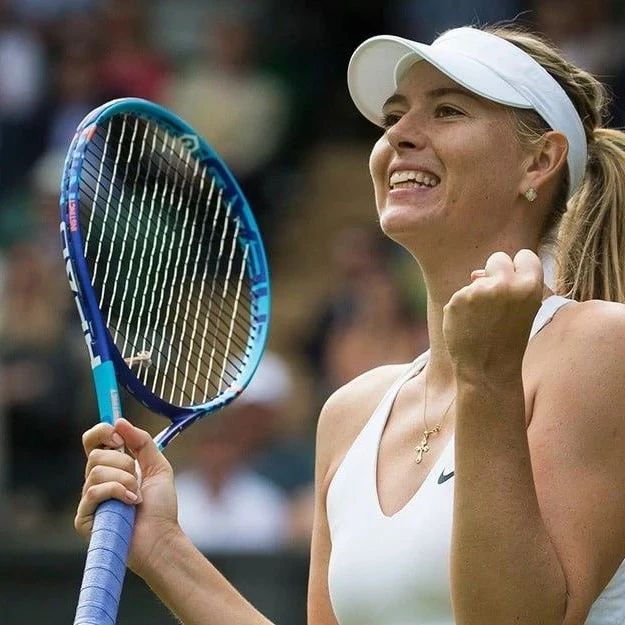The Influence of Body Posture on Tennis Technique
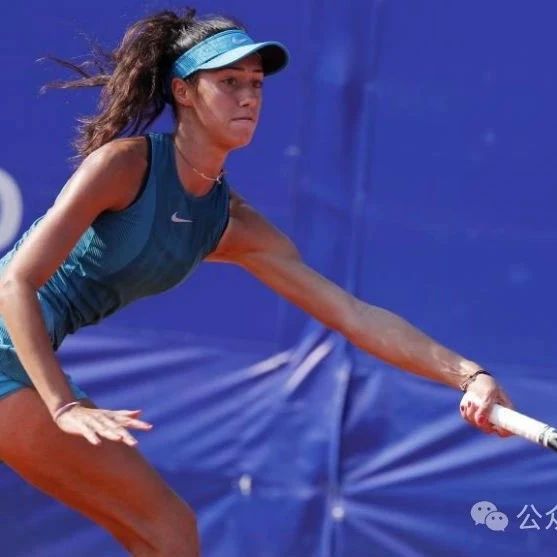
01
Prologue
Looking at today's tennis scene, both male and female players generally boast impressive physiques—tall and poised in front of the camera, standing tall like graceful bamboo swaying in the breeze.
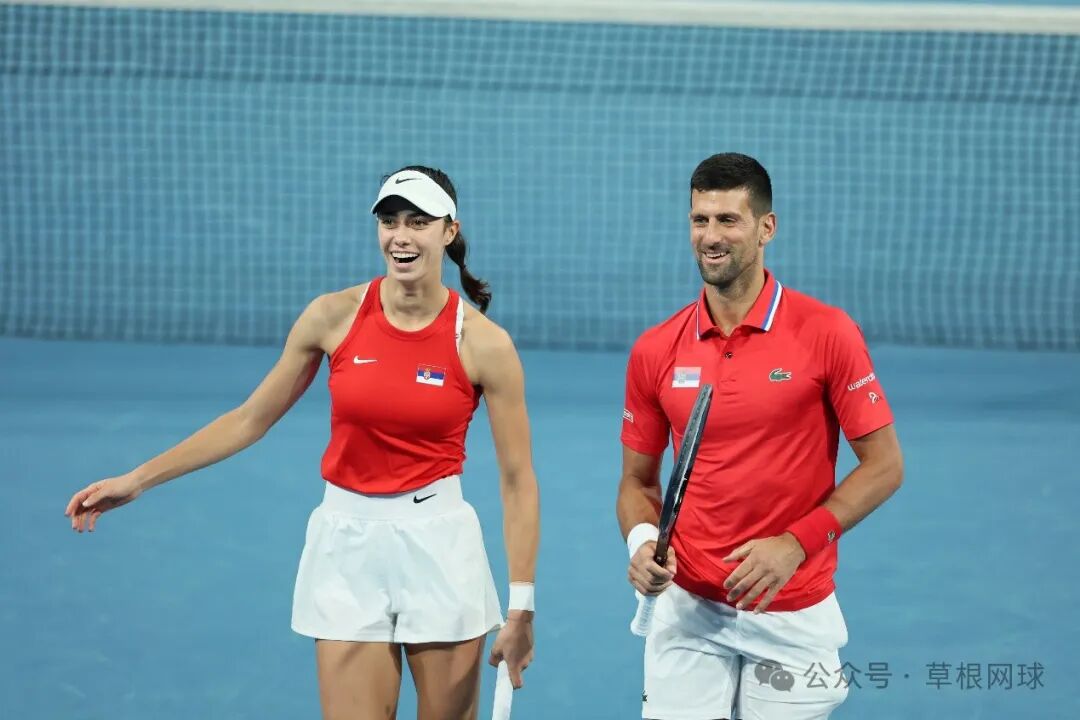
Djokovic and Danilovic
Shall we broaden our perspective a bit further? Many of the stars in the sports world also boast upright postures, commanding presence, and graceful, handsome features...
You could say that professional athletes are a group of individuals who push the beauty of the human body to its absolute limit—so, could the common traits they embody serve as inspiration for tennis enthusiasts everywhere?
After a series of learning and improvements, the author believes that a tennis player with proper posture isn’t just about performing graceful movements on the court—it also enables the body to safely and efficiently maximize its full potential.

WTA Finals Official Look Photos
02
The Impact of Body Posture on Hitting
It’s widely acknowledged that tennis techniques are difficult to master, and much of the research on "deliberate practice" theories also revolves around tennis. One piece of advice tennis enthusiasts often hear is simply to "increase your training time."
Unlike the conventional analysis from a "neural recruitment" perspective, the author believes that for most tennis enthusiasts, postural issues—when combined with maintaining a consistent training frequency—are the real bottleneck hindering technical improvement.
Tennis techniques involve long kinetic chains, and even one or a few postural issues can hinder the fluidity of the entire movement. Here are a few common examples.
1. Difficulty in performing the straddle step due to foot eversion.
Driving for long periods naturally leads to eversion of the right foot.
Split-step is the most crucial technical detail in tennis footwork; after jumping and landing, the weight should shift onto the balls of your front foot, while keeping the heel of your back foot slightly lifted and springy.
After understanding this detail, some players don’t necessarily *not* know they should land on the balls of their feet—but instead, an inward rolling of the foot (overpronation) is interfering with the flexion of their ankle joint, making it difficult for them to maintain stability during the shuffle step.
If the ankle joint cannot flex normally, it becomes impossible to land on the midfoot during stepping; instead, weight shifts more toward the base of the big toe. This altered stepping pattern not only makes it harder to maintain balance but also difficult to sustain for any extended period.
The correct stepping posture requires inward rotation of the ankles, creating a rigid, unified structure across the entire foot. If there’s noticeable outward tilting of the body while standing, it will become very challenging to internally rotate the ankles during stepping—and adjustments will be necessary.
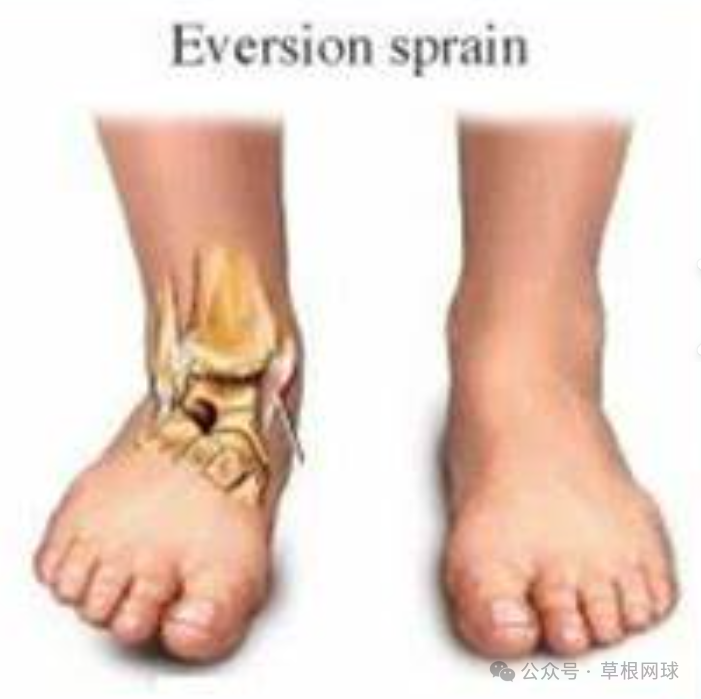
Right foot with eversion
Additionally, if a tennis player has supination of the foot, they are highly likely to push off the ground in an abducted position after rotating their body. Over time, this can lead to conditions such as plantar fasciitis and leg length discrepancy.
Building on an existing foot eversion, practicing explosive push-off steps will inevitably lead to knee joint compensation—and could result in the selective failure of either the anterior or posterior cruciate ligament, or the meniscus.
(lll¬ω¬) Sweat!
2. Limited hip joint mobility leads to forced jumping during the serve.
Prolonged sitting can lead to limited hip joint mobility.
When preparing to serve, the hip joint—led by the front foot—should be fully extended, creating a noticeable stretch. However, prolonged periods of sitting can weaken the gluteal muscles responsible for hip extension, leading to a loss of overall body elasticity and significantly reducing your reserve capacity.
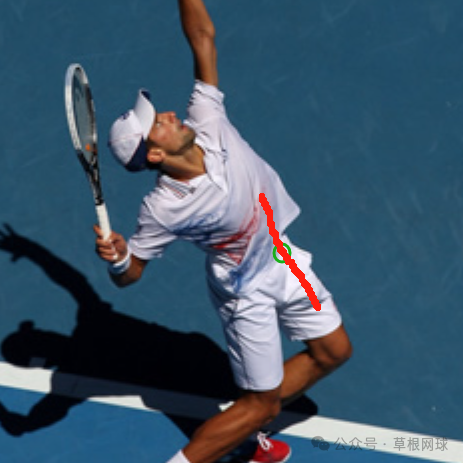
The foreleg-driven hip joint fully extends to store energy.
When serving, the hip joint needs to flex quickly. However, prolonged sitting often leads to difficulty with hip adduction, causing many players to struggle with proper hip flexion. Even if all upper-body movements are executed correctly, the ball ends up floating high into the air—precisely because the crucial step of rapid hip flexion is missing.
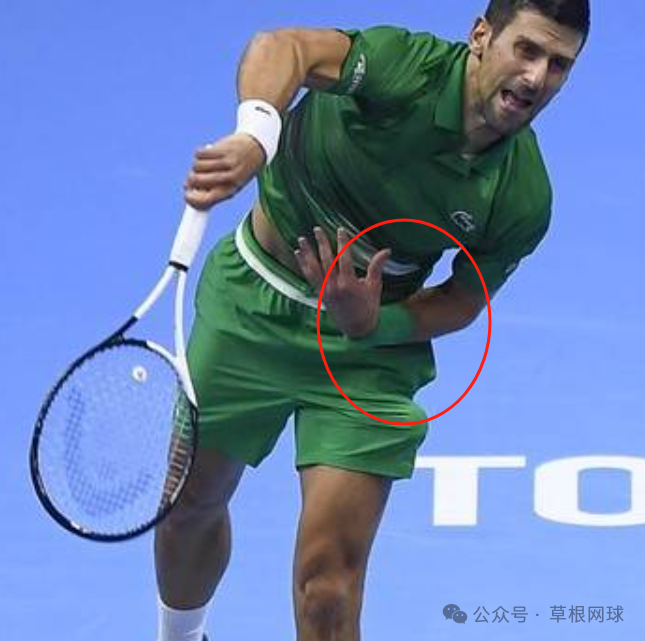
Rapid hip flexion causes the ball to land within the court.
So, is there a situation where you serve with the hip joint remaining flexed? That’s exactly how I used to do it—when the hip stays flexed, you first have to stand facing the ball, which prevents your entire body from twisting and storing energy. Secondly, you’d need to jump higher intentionally just to maintain the necessary hitting height. As a result, your entire kinetic chain ends up thrown off balance.
Most importantly, the entire serving motion revolves around the shoulder as the axis—swinging the arm—and ultimately, both the shoulder and elbow joints end up feeling intense pain.
3. Thoracic kyphosis causes difficulty in rotational movements.
Prolonged forward head posture can restrict the mobility of thoracic kyphosis.
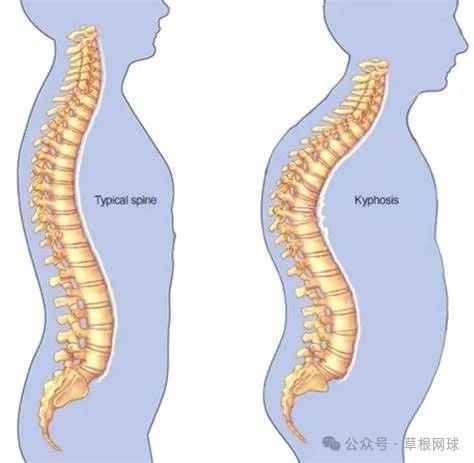
Thoracic kyphosis with restricted rotation
If we were to ask which part plays the most critical role during a tennis player's rotational movement, there’s no doubt it’s the rotation of the thoracic spine—professional players can even hit a Return Ace using just this spinal motion.
The thoracic spine can only twist quickly when it’s in an extended position, helping to prevent injuries. However, if you spend long hours with your head bent over a desk or work surface, the natural backward curve of your thoracic spine will deepen, increasing pressure on the intervertebral discs. While restricted movement may follow as a secondary issue, forcing a twist under these conditions could lead to even more serious consequences—such as disc compression and bulging.
03
The Wisdom of Katsunori Kamiya
Coach Katsunori Kamiya is a senior figure whom I deeply admire; he is the author of the book "200 Tennis Practice Menus That Teach You the Basics."
(This book is domestically titled "200 Practical Tennis Skills to Improve," a translation that unfortunately falls short of its true potential.)
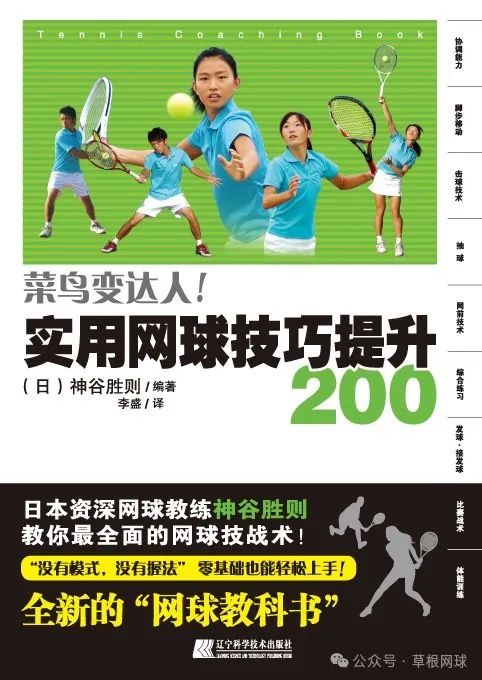
"200 Practical Tennis Techniques to Elevate Your Game"
While domestic coaches continue to focus on cultivating players through standardized techniques, Coach Kamiya early on emphasized that "mastering the 'right way to use your body' is the quickest path to improving your tennis game."
At first glance at Coach Kaminaga’s work, the author didn’t think much of it—after all, the book’s very first chapter teaches readers how to stand, how to walk…
Since we're focusing on practical tennis skill improvement, let's flip to sections like "Forehand Stroke," "Volley," and "Serve" and get right into practice.
However, after the author spent considerable time practicing and imitating the techniques outlined in the book, the actual improvement in tennis skills turned out to be minimal.
“Katsunori Kamiya, as a meticulous and rigorous senior scholar, would never have included so much irrelevant content in his own work—there must be something wrong with *my* own study methodology!” I told myself.
On revisiting this book, we realize that Coach Kamiya has already made it clear in his writings: the conventional "experience-based analysis" approach offers players very limited potential for advice and guidance, while assessing a player's physical posture serves as the foundation for "ability analysis."
Only by focusing on proper posture can you build physical fitness—and only with strong physical fitness can you truly master technique. That’s exactly Coach Kamiya’s true wisdom.
Human bodies should move efficiently throughout the day—whether sitting, lying down, standing, walking, or running—by engaging the smallest possible muscle groups while expending minimal energy.
If even basic bodily postures constantly falter, then it becomes even harder to control your body during physical activity.
Good posture is the foundation for efficiently using your body—perhaps that’s exactly why Coach Kamiya started by teaching us how to stand and walk.
Here, the author urges coaches to pay attention to whether their students have postural issues and provide them with practical improvement suggestions—rather than simply focusing on technical details when students’ abilities are still developing.
A tree without roots, or water without a source, cannot last long!
04
To conclude
“Sensitivity” is essential in everyone’s journey of learning and exploration. If you’ve never paid attention to your posture before, start becoming “sensitive” now—notice whether your standing, sitting, or lying-down postures are natural, and identify if any poor alignment might be holding back your progress in improving your tennis technique.
If possible, consider getting a professional postural assessment. If your standing posture comfortably aligns with key criteria—such as proper three-cavity alignment and proper lower-limb force line alignment—then your posture is already above average among fellow players, significantly reducing your risk of injury.
In a subtle yet profound way, the author can't help but reflect that the standards of human beauty aren't imposed by any single culture—but rather emerge from the seamless integration of "science, efficiency, and visual appeal."
With a great posture, every movement feels effortless—may every player's journey toward improving their skills be smooth and seamless!
